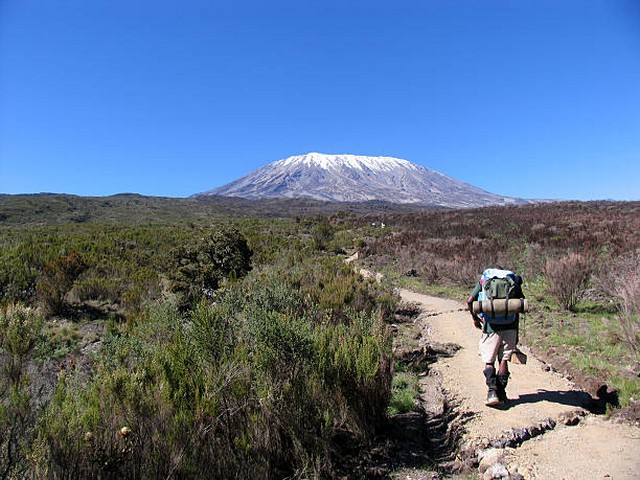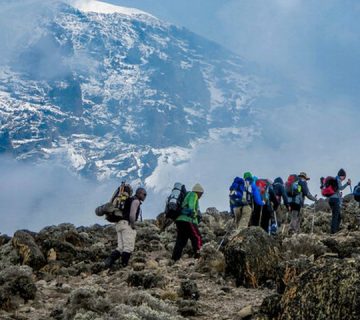Best Trekking Socks For Kilimanjaro Climbs: Your Ultimate Guide
Introduction
Every journey to the majestic summit of Mount Kilimanjaro begins with a single step, and every step counts when you're trekking up the world's tallest free-standing mountain. At Kilimanjaro Centre for Trekking and Ecotourism (KCTE), we understand that the success of your climb hinges not just on your physical and mental preparation, but also on the gear you choose. Among the most overlooked, yet crucial, pieces of gear are your trekking socks. Choosing the best trekking socks for Kilimanjaro climbs can be the difference between a comfortable ascent and a painful ordeal. In this blog post, we delve deep into why selecting the right socks is vital and which types are best suited for your Kilimanjaro adventure.
Why Are Good Trekking Socks Important?
The importance of high-quality trekking socks cannot be overstated. They are your first line of defense against blisters, moisture, and cold. Climbing Kilimanjaro exposes trekkers to a variety of climates – from the warm and humid rainforest base to the freezing conditions at the summit. The right socks help maintain a comfortable temperature and moisture level, which can significantly impact your overall experience and performance.
1. Material Matters: Choosing the Right Fabric
When it comes to trekking socks, material is king. The ideal sock for a Kilimanjaro climb should offer moisture-wicking properties, temperature regulation, and comfort. Here are the most common materials:
- Merino Wool: The gold standard for trekking socks, Merino wool is naturally moisture-wicking, odor-resistant, and thermoregulating. It keeps your feet warm in cold weather and cool in hot conditions, making it perfect for Kilimanjaro's diverse climates.
- Synthetic Blends: Typically a mix of polyester, nylon, and spandex, synthetic blends are designed for durability and quick drying. They are slightly less effective at odor control but excellent for moisture management.
- Bamboo: Eco-friendly and soft, bamboo socks are great for sensitive skin. They offer good moisture absorption and are naturally antibacterial.
2. Cushioning and Fit: Comfort on Every Step
The length and cushioning of your socks play a crucial role in your trekking comfort.
- Cushioning: Look for socks with adequate cushioning in the heel and toe areas to absorb impact and protect against pressure points. This is vital when trekking on uneven terrains like those found on Kilimanjaro.
- Fit: Properly fitting socks will prevent bunching and slipping, common causes of blisters. Ensure your socks fit snugly around your feet and calves without being too tight to avoid restricting circulation.
3. Breathability and Moisture Control: Keeping Feet Dry
Breathability is a critical feature of any trekking sock. Moisture control keeps your feet dry, reducing the risk of fungal infections and blisters. Ensure your chosen sock has good ventilation properties — typically found in the design's mesh zones — to allow for adequate air circulation.
4. Temperature Regulation: Keeping Warm Without Overheating
Mount Kilimanjaro's summit reaches temperatures well below freezing, making insulation a necessary feature in your socks. However, because the climb starts in a much warmer climate, your socks also need to be able to adapt to varying temperatures. Merino wool is particularly effective in this regard.
5. Durability: Socks That Last Beyond the Climb
Considering the duration and the rough terrain of Kilimanjaro, durable socks are a must. Look for socks that can withstand a lot of wear and tear without losing their shape or functionality. Reinforced heels and toes, as well as double-stitching, are good indicators of durable socks.
Frequently Asked Questions
-
How many pairs of socks should I bring for my Kilimanjaro climb?
- We recommend bringing at least 5 pairs of trekking socks. This allows you to have a fresh pair for each day of the climb, plus an extra pair in case of emergencies.
-
Can I use cotton socks for trekking Kilimanjaro?
- Cotton is not advisable for trekking as it absorbs and retains moisture, which can increase the risk of blisters and cold feet.
-
Should I wear two pairs of socks while climbing Kilimanjaro?
- Wearing two pairs of socks can provide additional cushioning and protection against blisters. A thin liner sock under a thicker trekking sock is a popular choice among climbers.
-
How do I wash my trekking socks during the climb?
Conclusion: Start Your Kilimanjaro Journey with the Right Foundation
Embarking on a Kilimanjaro climb is a dream for many adventurers, and starting off with the right gear is essential. At Kilimanjaro Centre for Trekking and Ecotourism (KCTE), we're dedicated to ensuring you have the most enjoyable and successful climb possible. By choosing the best trekking socks, you set a solid foundation for what is sure to be an unforgettable adventure.
Ready to take on Kilimanjaro? Book your climb with us today at KCTE and ensure your trek is managed by experts who care about every step of your journey. Visit our website or contact us for more information on how we can help you conquer the roof of Africa. Adventure awaits, and it begins with the right pair of socks!




